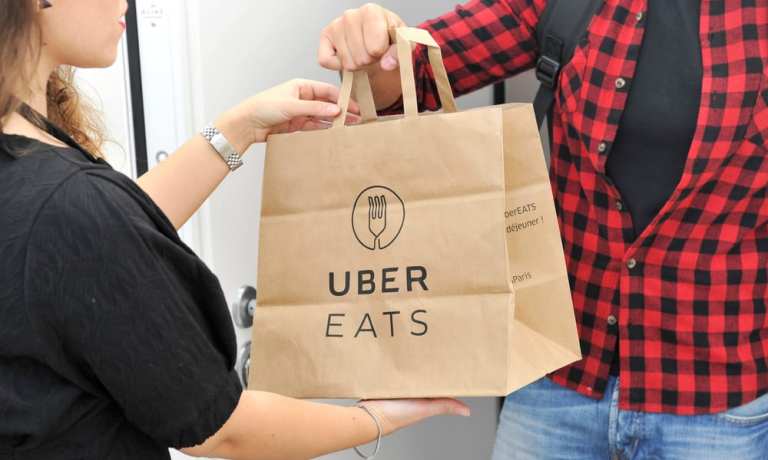Uber Counters Ridesharing Slump With Delivery Double-Up

Before Q2 2020, Uber was the innovator that launched the concept of a digitally backed ridesharing business with a growing side hustle in the world of delivery.
As of Q2, Uber is a delivery company with a side hustle in the world of ridesharing of which it was the pioneer. Uber Eats is now bigger in terms of adjusted net revenue that Uber’s “core” ride-hailing business, which has been one of the many casualties of the COVID-19 pandemic’s stay-at-home orders and overall consumer reluctance to physically interact with strangers. And Uber has shifted its strategy to get with the rapidly changing times.
Uber reported a net loss of a whopping $1.78 billion during Q2 2020, a decline from Q2 2019’s net loss of $5.24 billion. The company went public last year, resulting in various one-time, non-cash costs. Uber’s show loss of $1.02 per share did come in higher than analysts’ estimate of a $0.86 per-share deficit.
Uber did beat analyst estimates on revenue — bringing in $2.24 billion versus $2.18 billion forecast pre-release.
The most interesting and discussed numbers, however, were in Uber’s ride-booking and delivery figures during the quarter. Rides declined 73 percent during the quarter, bringing in revenue of $3.05 billion in revenue and missing analyst expectations of $3.47 billion.
Delivery, on the other hand, surged 113 percent during the quarter, bringing in $6.96 billion versus $6.57 billion expected.
Delivery did the bigger numbers in terms of gross dollar transactions — though as many analysts pointed out Uber’s mobility service has a better take-rate than its delivery services — which means while delivery gross revenue roughly doubled rides, its adjusted net revenue figures were much closer, though delivery still held the edge.
When it came to pulling in profit, however, only Uber’s core business generated results in the black, while delivery services lost money.
On his call with analysts after the figure went public, CEO Dara Khosrowshahi noted that the pandemic crisis had moved delivery services from the world of luxury services to a utility. A status, he forecast that will last beyond the pandemic period’s acute effects of stay-at-home orders have passed.
“It’s become clear that we have a hugely valuable hedge across our two core businesses that is a critical advantage in any recovery scenario,” Khosrowshahi said Thursday. “When travel restrictions lift, we know the mobility trips rebound. If restrictions continue or need to be re-imposed, our delivery business will compensate.”
Compensate and expand, as Uber highlighted its recent launch of Uber Connect — a new service that allows users to send small packages via UberX drivers to local destinations. The service has made 3 million trips globally since it launched in early June, according to Uber.
Uber’s CEO went on to note in his remarks to analysts that thus far during the recovery, they have observed the core ride-hailing business has been uneven and largely regionally determined. Rides were down 50 percent to 85 percent in top U.S. markets during the second quarter, he said, but in top European markets, including France, Spain and Germany, rides were only down about 35 percent year-over-year.
“When cities move again, so does Uber,” Khosrowshahi noted.
Uber is a smaller firm as a result of COVID-19 in terms of headcount. As the pandemic began taking a bite out of Uber’s revenue, the firm laid off about 14 percent of its workforce, or roughly 3,500 employees and sold its Jump electric bike business to bike-sharing firm Lime (Uber is an investor). But while it has been cutting in some places, Uber announced last month plans to purchase delivery firm Postmates, and U.K. taxi software firm Autocab earlier this week in the run-up to its earnings release.
Investors were clearly a bit shaken by Uber losing nearly a third of its revenue in Q2 — as the firm’s stock was trading 5 percent down after hours.